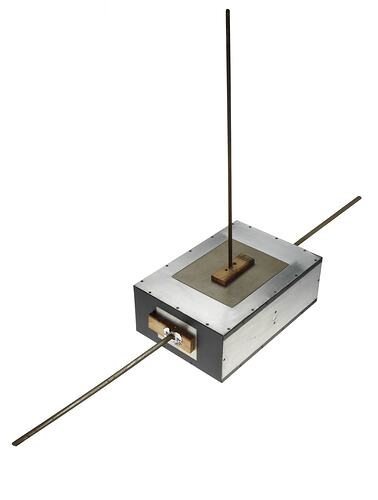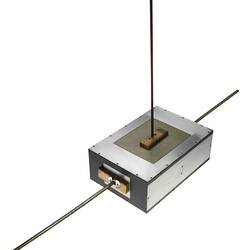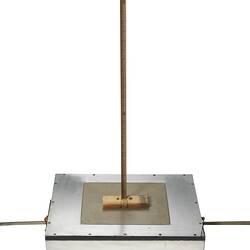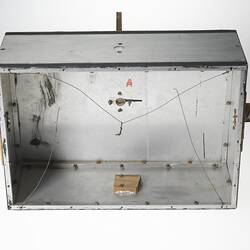Summary
Engineering model of a satellite designed and made by student members of the University of Melbourne Astronautical Society and University of Melbourne Radio Club. The satellite was designed and made by Peter Hammer, Richard Tonkin and Owen Mace in 1966-67 with a small budget of $600.
The satellite was originally planned to be launched in late 1966 by the United States Air Force as part of the Oscar satellite series, a program for the geophysical study of the earth and its atmosphere. Australia was the second country, after the United States of America, to participate in the OSCAR (Orbiting Satellite Carrying Amateur Radio) series. The intended launch was cancelled, meaning that the satellite was beaten into space by the Australian Government's Weapons Research Establishment satellite, WRESAT, which was launched in November 1967 from the Woomera rocket range in South Australia.
The Australis OSCAR 5 was eventually launched on a NASA Delta missile carrying a weather satellite on 23 January 1970 from Vandenberg Air Force Base, Lompoc, California. The satellite was prepared for launch by AMSAT, the radio amateur satellite organisation founded in 1969; Oscar 5 was its first project.
Australis OSCAR 5 operated successfully for several weeks and was tracked by over 200 radio amateurs in 27 different countries. The satellite transmitted data from seven different onboard sensors on two wavebands, 2 metre and 10 metre, commonly used by radio amateurs. Because the students could not afford to use then very expensive solar cells, the satellite used chemical batteries, which were exhausted within a few weeks. The last signal received from the satellite was on 9 March 1970.
Physical Description
Silver metal and plastic box with metal tape measures attached to wood blocks to imitate antennae.
More Information
-
Collecting Areas
-
Acquisition Information
Donation from Melbourne University Astronautical Society, circa 1970
-
Maker
Melbourne University Astronautical Society, Melbourne, Greater Melbourne, Victoria, Australia, 1965-1966
-
Designer
-
Designer
-
Designer
-
Place & Date of Event
Lompoc, California, United States of America, 23 Jan 1970
Date launched. -
Classification
-
Category
-
Discipline
-
Type of item
-
Overall Dimensions
1430 mm (Length), 304 mm (Width), 844 mm (Height)
Dimensions of box only: Width: 304mm; Height: 160mm; Depth: 440mm. Horizontal antennae both extend 495mm in each direction from box. Vertical antenna extends 674mm from box.
-
References
Australis OSCAR 5 is catalogued in the NASA Space Science Data Coordinated Archive: number NSSDCA/COSPAR ID: 1970-008B Museums Victoria MV Story video: [Link 1]
-
Keywords
Satellites, Amateur Radios, Radio Receivers, Radio Transmitting, Spacecraft, Science, Research, Students, Universities, Models & Modelmaking






